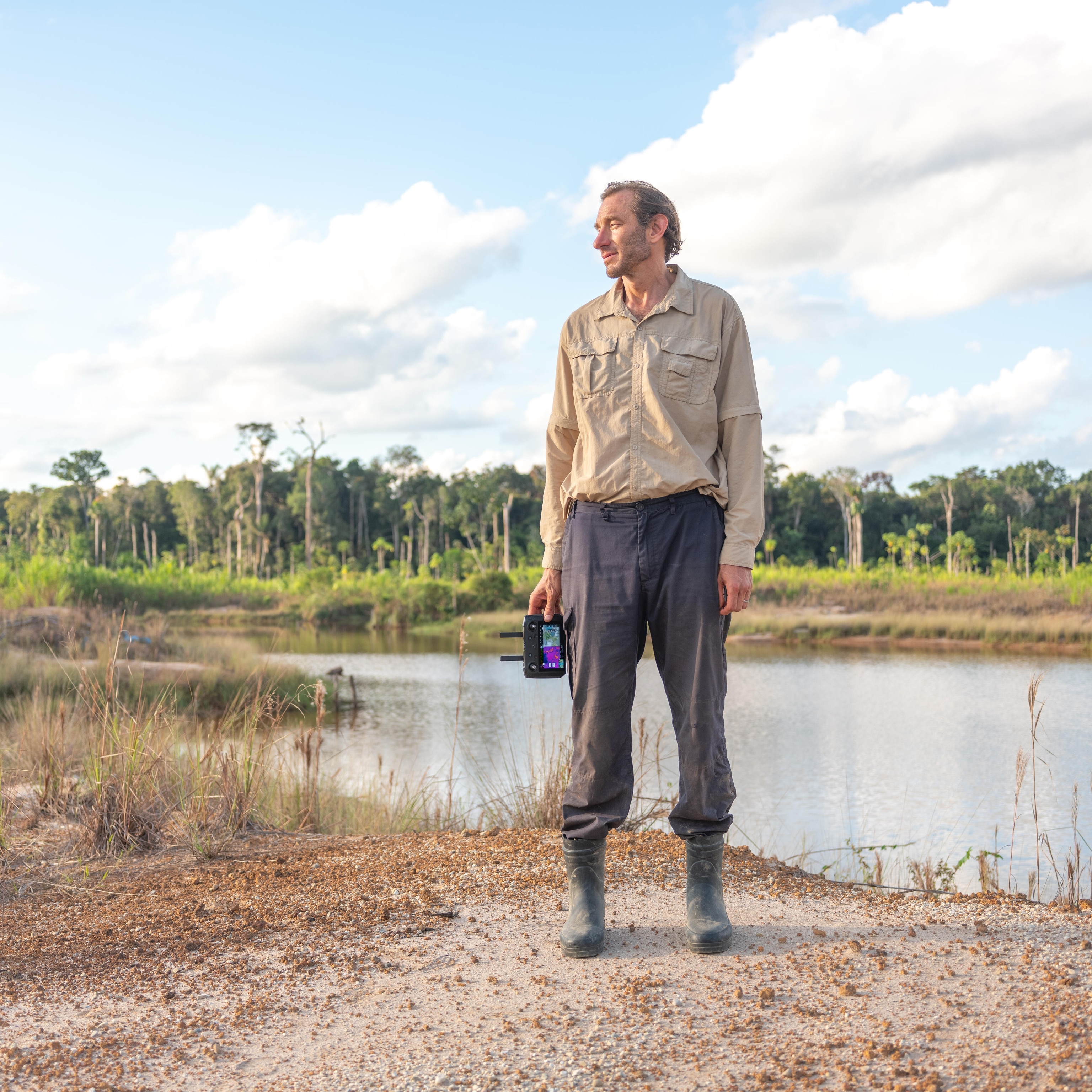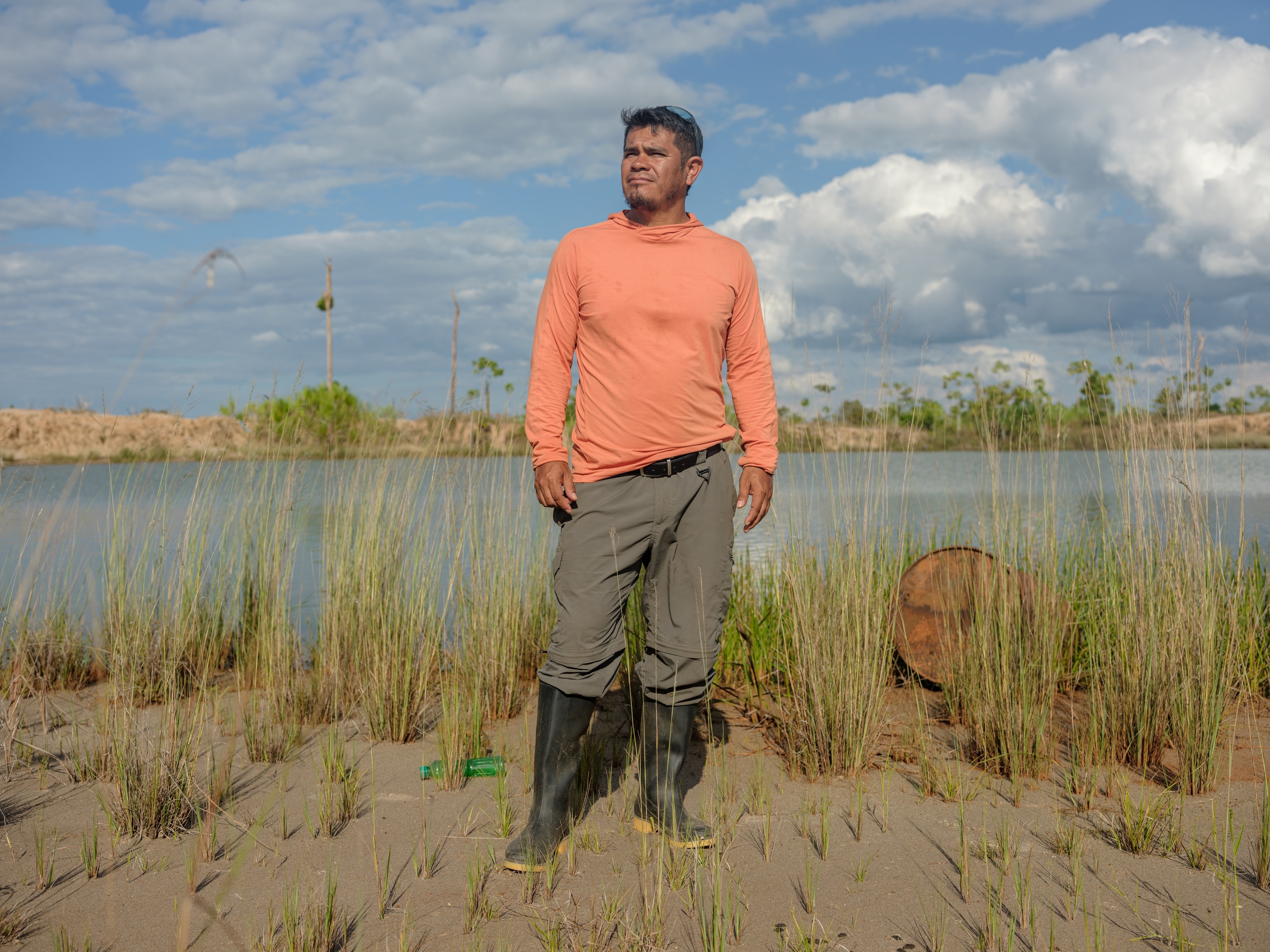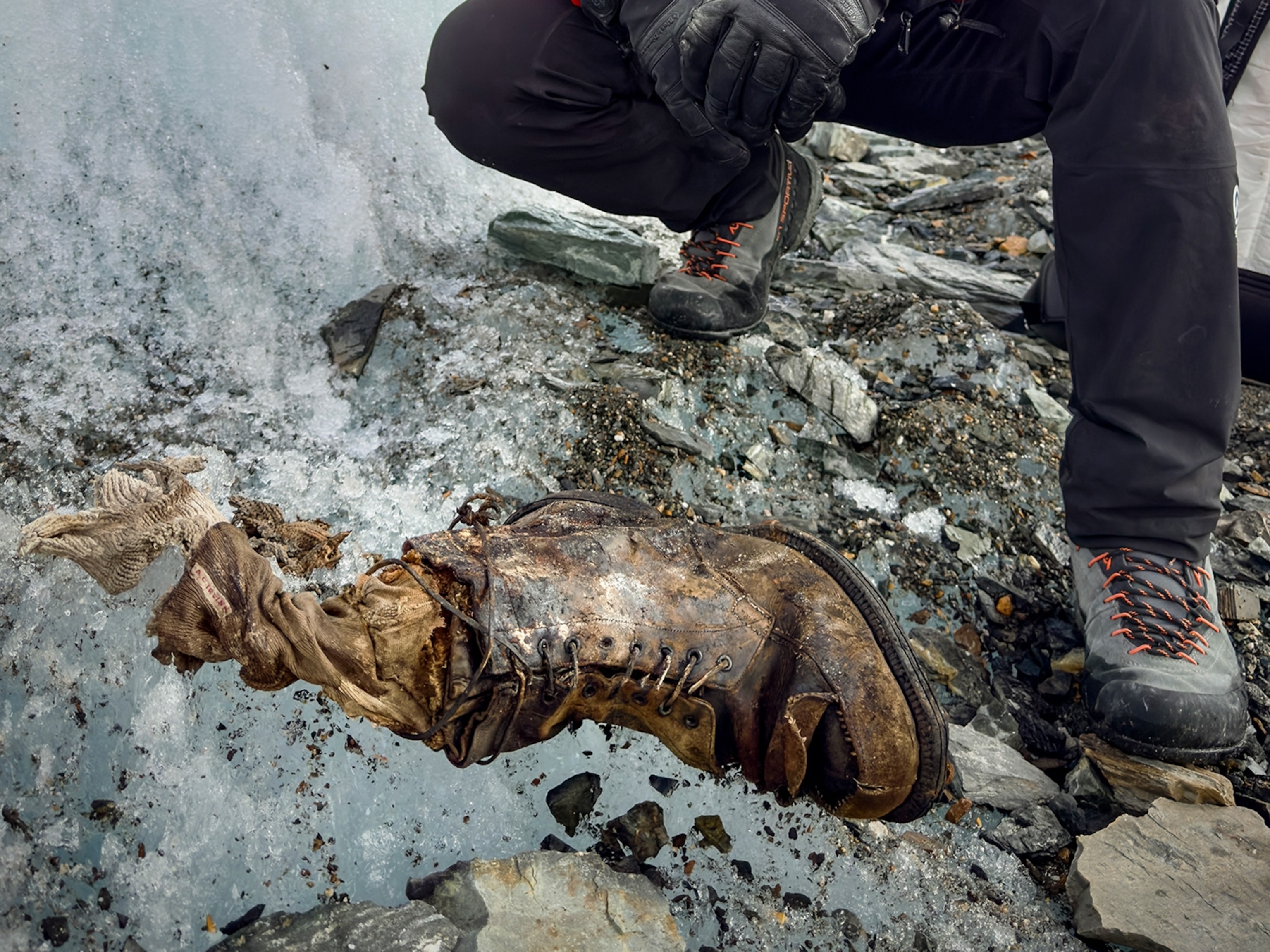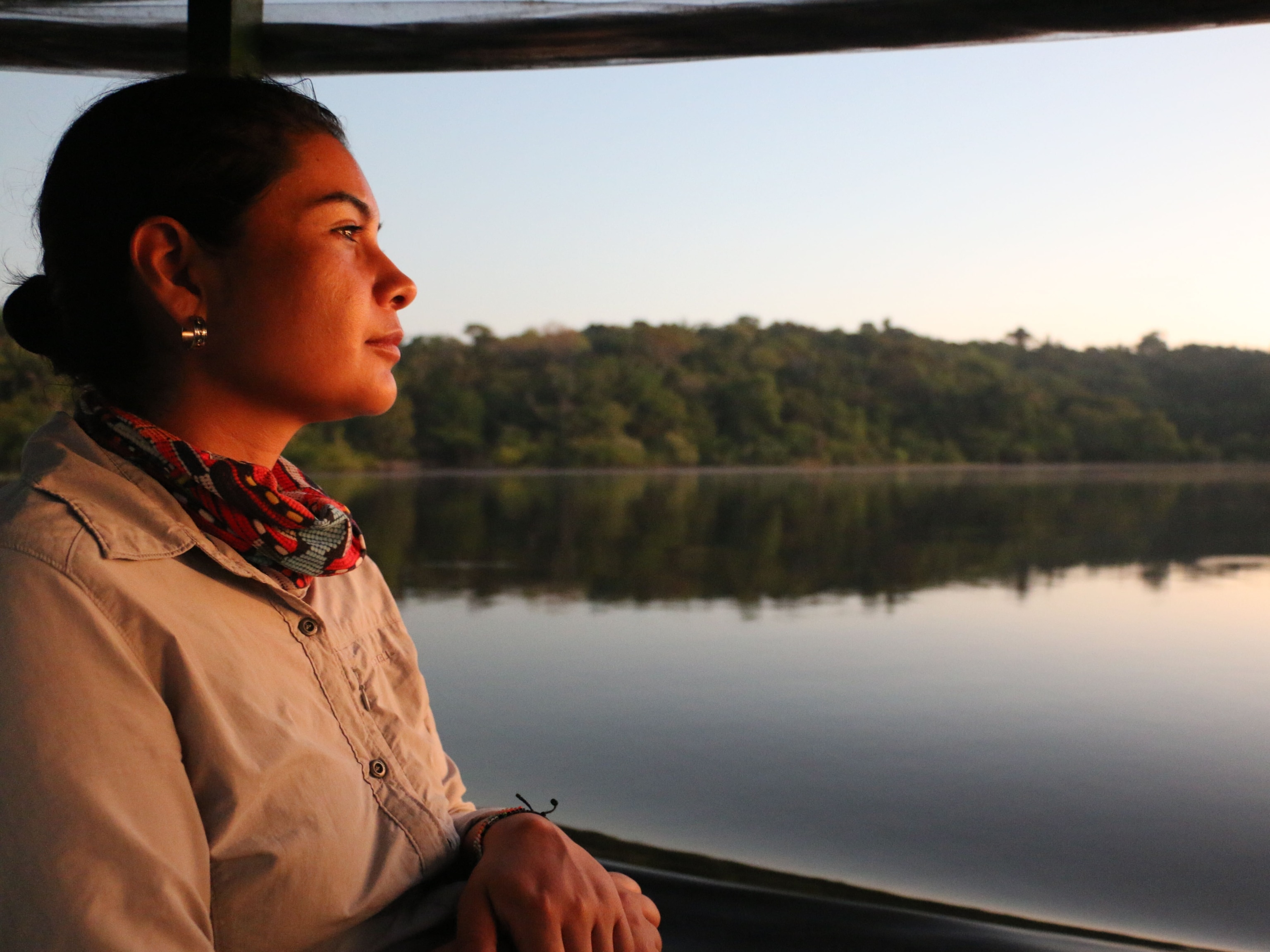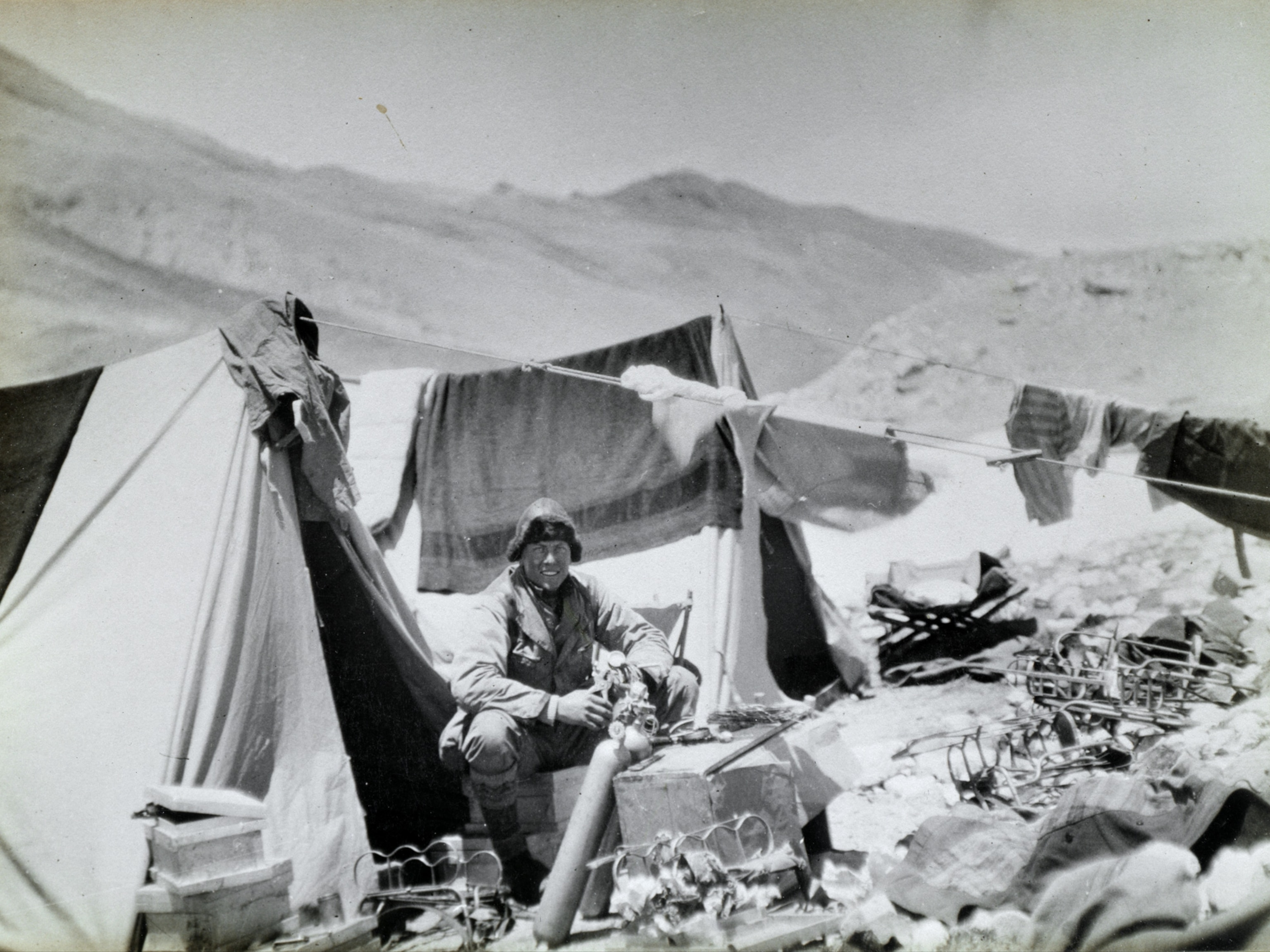
He’s the last surviving member of the first expedition to summit Everest
86-year-old Sherpa has seen tourism change life at the foot of the world's tallest mountain
Namche Bazaar, Nepal — The story of Edmund Hillary and Tenzing Norgay’s conquest of Mount Everest has long since passed into legend. But the thrill and emotion of those heady days 66 years ago, and the colossal changes they brought to the local communities beneath the mountain, remain vividly etched in the memory of one man: Kanchha Sherpa, the last surviving member of the 1953 British Expedition’s Sherpa team.
“Everything was different then,” says Kanchha, a bespectacled 86-year-old grandfather with wrinkled skin and twinkling eyes. “The clothing, the equipment was nothing like today, and there was only kerosene to cook with.” Kanchha pauses to lift two fingers to momentarily touch his fleece jacket on top of which he wears a neckless of prayer beads.
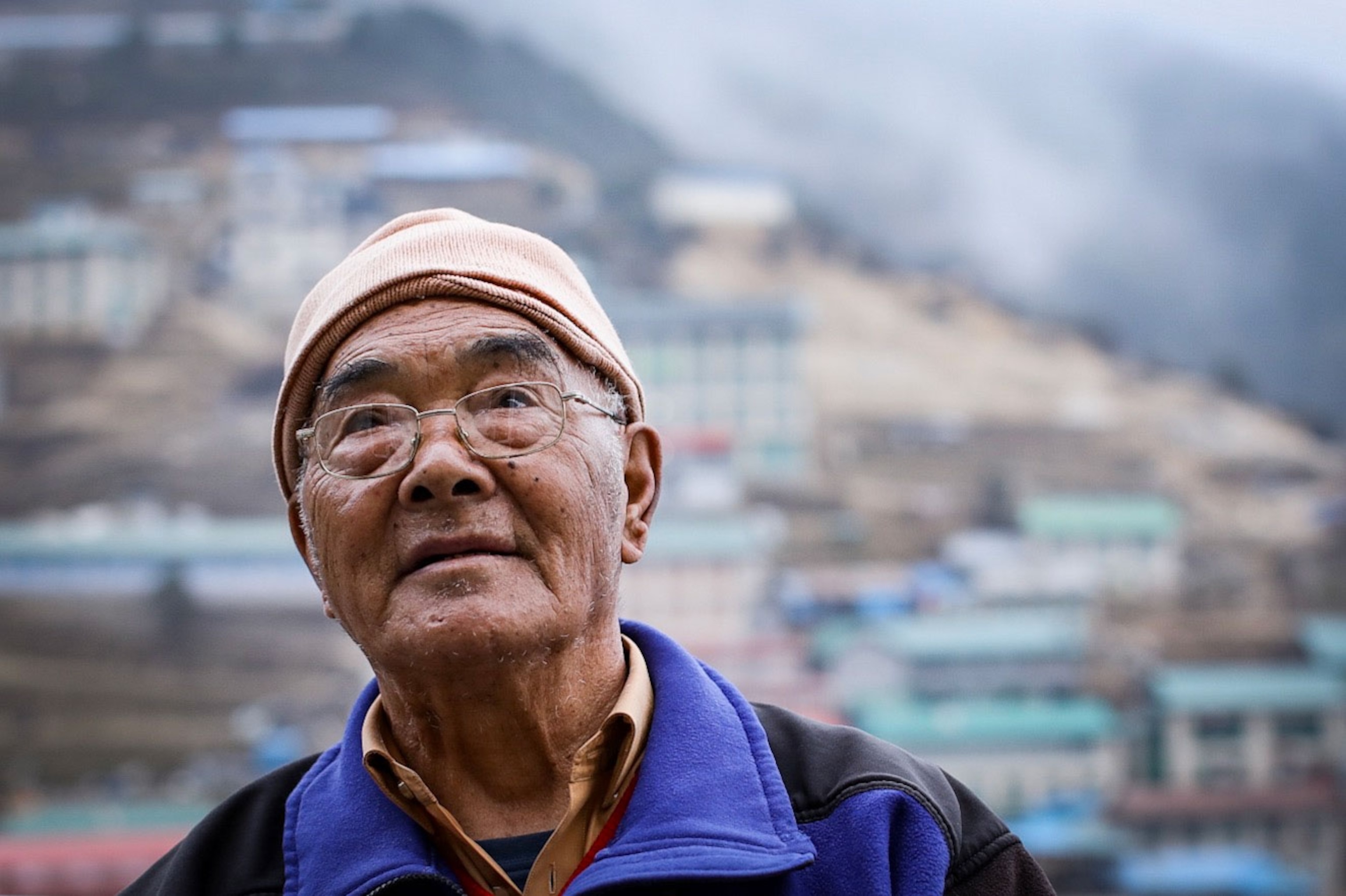
Kanchha is a life-long resident of Namche Bazaar, the main trading hub of the Khumbu region. A century ago it was a hard-scrabble village of perhaps 1,500 people, but today it’s best described as the center of Sherpa life. Four-story lodges tower above narrow stone walking paths teeming with trekkers who meander among internet cafes, souvenir shops, and coffee houses. Tens of thousands of international tourists visit the Khumbu Valley each year, and by and large, Namche's residents have prospered.
It’s a far cry from the impoverished life Kanchha was born into. “We had no money and little food,” he recalls, speaking in a mixture of Sherpa, Nepali, and English in his bedroom on the top floor of the Nirvana Home lodge, the family business he and his wife began. The walls are adorned with old photographs and mementos from his younger days, including an inscribed note from Hillary. “Some people had potatoes, but some people had no potatoes,” Kanchha recalls, noting many Sherpas would forage in the woods for mushrooms and wild plants to eat.
As a boy, Kanchha wasn’t even aware that Chomolungma, the big mountain at the head of his valley, was the highest mountain in the world. That changed in 1952, when the Swiss made two determined expeditions to climb what Westerners called Everest. Kanchha, then 19 years old, saw the teams passing through Namche on their way to the mountain and noticed Tenzing Norgay, the charismatic sirdar (foreman) of the expeditions’ high-altitude porters.
“Tenzing was like a king, a very important man,” Kancha says today. By that time, Norgay was in his late thirties and had gained a reputation as one of the best indigenous Himalayan guides. That same year, Kancha was carrying a heavy basket on the trail below Namche when he encountered three well-dressed Sherpas in Western-style clothes. “I asked ‘Where did you get the money to buy that jacket?’ ” Kanchha says. “And he says, ‘In Darjeeling, working for Tenzing Norgay.’” Kanchha then decided to run away to Darjeeling.
It took four long days of walking to reach the northern Indian frontier city, and Kanchha and two friends arrived at Norgay’s house well after dark. “Tenzing came to the window, and he asks, ‘What are your fathers’ names?’ ” Norgay knew Kanchha’s father, and invited him in. Kanchha’s two friends were told to seek employment elsewhere.
Norgay bought Kanchha new clothes, and, for three months, Kanchha did chores around his home—carrying water, doing the laundry, and helping out in the kitchen. “Then Tenzing says, ‘Kanchha, we’re going to Kathmandu, and then to Chomolungma.’ ”
Although Kanchha had no mountaineering experience, he was simply thrilled to have a job. The pay, five rupees a day, was quadruple what he made carrying loads at lower altitude around the Khumbu. In Kathmandu, they rendezvoused with the British. It was Kanchha’s first time seeing Westerners. “The English, they had round eyes, yellow hair, and Hillary—he was so so tall!”
On Everest, the more experienced Sherpas showed Kanchha how to walk with crampons and use an ice ax. “The icefall was scary, but we brought logs with us to cross the big crevasses,” he says, shaking his head with a smile.
Kanchha, like the vast majority of Sherpas, was climbing on Everest for financial reward rather than personal satisfaction. For the 1953 Sherpa team, the biggest prize was carrying a load to the South Col, for which the British had promised a 300-rupee bonus. This was a strategic move by John Hunt, the leader of the expedition, who knew that a well-stocked depot of oxygen bottles and other supplies at the South Col was critical to the expedition’s success.
On the evening of May 21, 1953, Kanchha found himself crammed into several tents with 13 other Sherpas and three sahibs—Westerners—at Camp Seven, high on the Lhotse face and still a day’s climb from the South Col. A group of Sherpas had been scheduled to climb to the South Col that day, but they were too scared to leave camp that morning. Sensing disaster, Norgay and Hillary raced up the mountain to cajole the tired men into action.
Kanchha still remembers Norgay’s dogged leadership. “He cooked us tea and gave us some snacks. Some Sherpas’ feet were cold, and so he rubbed them to warm them up… Tenzing, he was a very strong man, but also a very kind man for his workers.”
The next day, Kanchha followed in Hillary and Norgay’s footsteps to the South Col and deposited his 50-plus-pound load of equipment on the windswept pass.
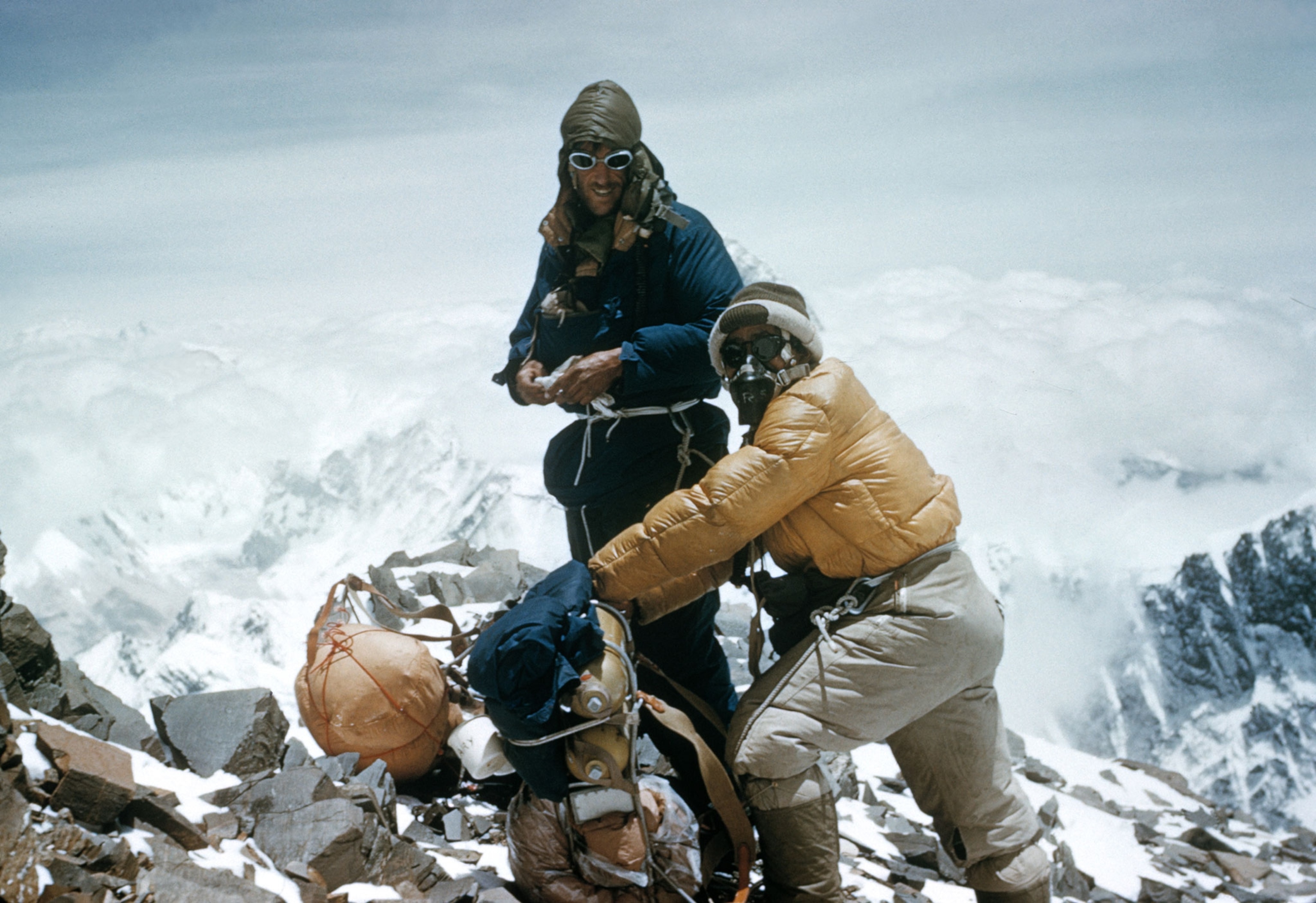
When Hillary and Tenzing summited, Kanchha was in Camp 2. “There was no radio, so we were waiting and waiting. When they came down, everyone was hugging and cheering.” One thing is still etched in his mind—the amount of food that the expedition simply left on the mountain. “So much food we left at Camp 2—many biscuits, many tin meat, tea and sweet things…”
Kanchha continued to work as a high-altitude porter until 1973 when his wife convinced him to quit the dangerous trade. In recent years, Kanchha has become something of a local celebrity. He does a speaking program for tourists in Namche, “Story Time with Kanchha,” which was featured in a short film sponsored by Google. He also helped start a foundation in his name dedicated to providing educational opportunities and preserving Sherpa culture. One of his eight grandchildren, Tenzing Chogyal Sherpa, has earned a master’s degree in glaciology and is currently studying climate change as a member of National Geographic’s 2019 Everest Expedition.
“The tourism, it’s been good for the Sherpas… but it’s bad for the gods,” Kanchha says with a sardonic chuckle. He faintly gestures at the lines of tourists and towering mountains that lie beyond his window.
“When I was a boy, there were many feet of snow in winter. Now, the summits are black. That’s not good.”
